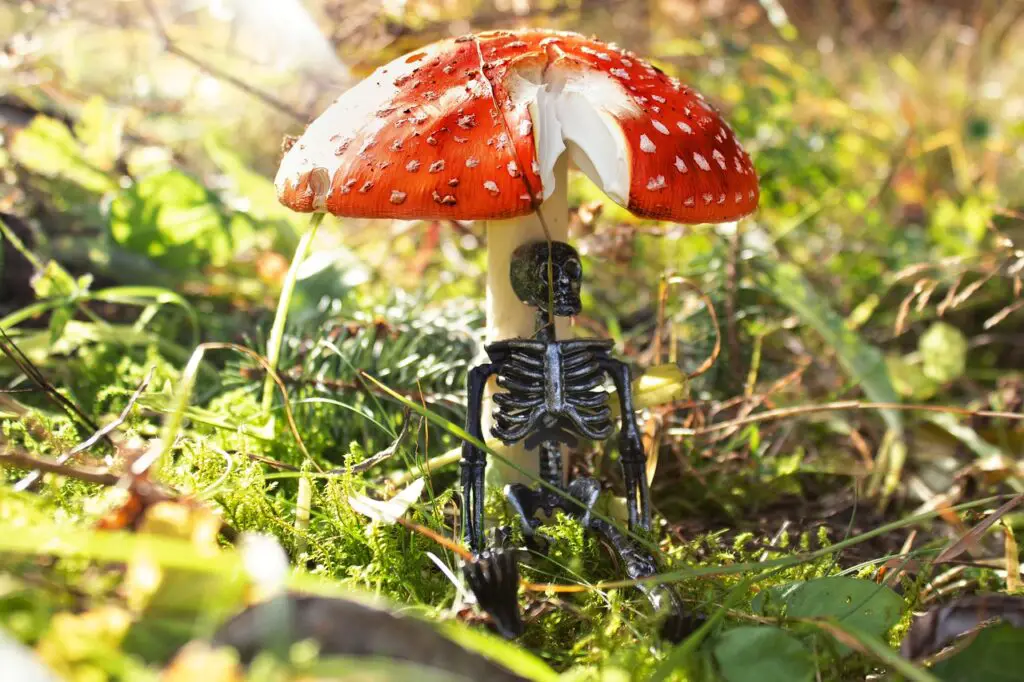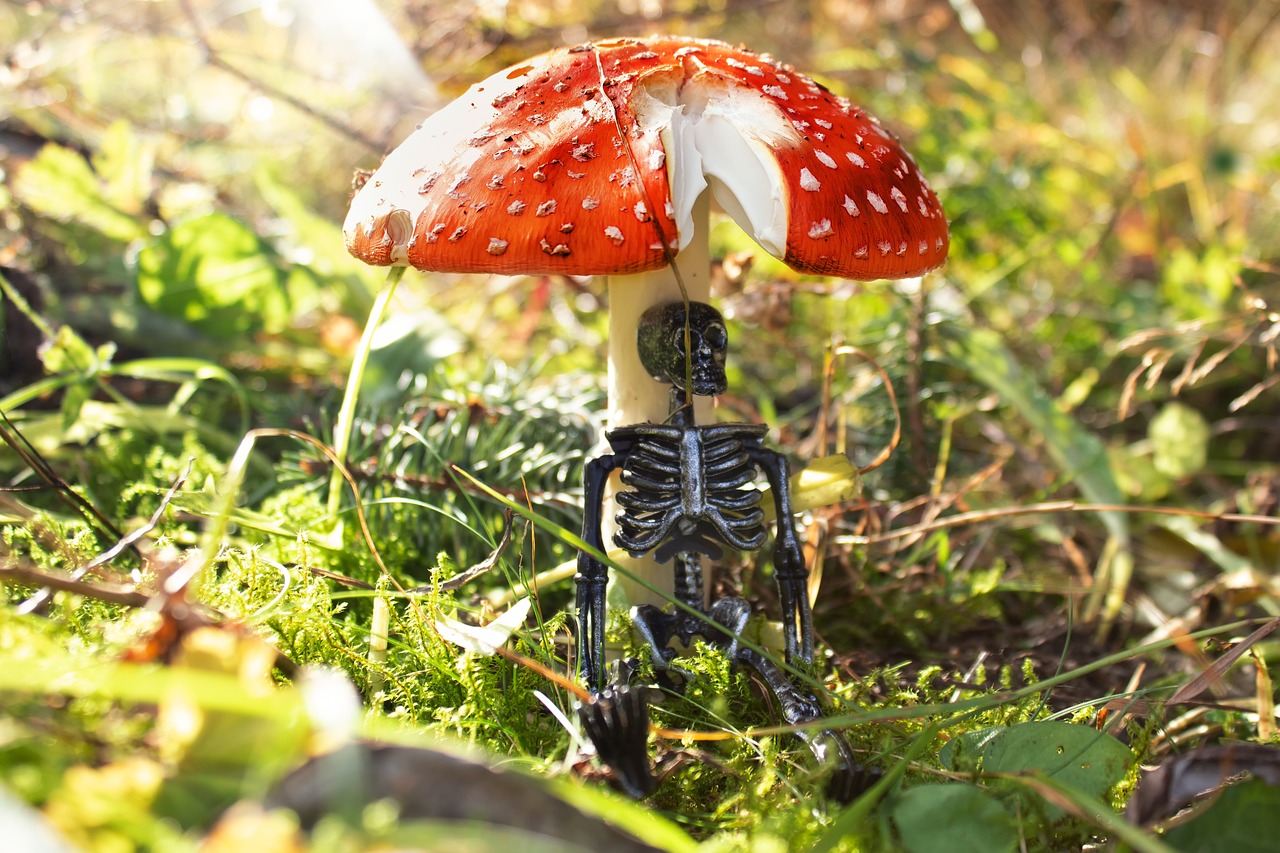When it comes to the fascinating world of mushrooms, there’s a crucial lesson to learn: not all mushrooms are safe to eat. In this brief exploration, we’ll delve into the realm of mushrooms that are not edible, helping you understand the importance of distinguishing between the mushrooms you can enjoy and those you should avoid at all costs.
Whether you’re an aspiring forager or just curious about the fungi around you, this guide will provide essential insights to keep you safe while exploring the diverse world of mushrooms.
Common Toxic Mushrooms: Recognize and Avoid
When it comes to mushrooms that are not edible, it’s crucial to remember one simple rule: if you’re not absolutely certain a mushroom is safe to eat, don’t eat it. Some inedible mushrooms can be highly toxic, leading to serious health issues or even death if consumed. The differences between edible and non-edible mushrooms can be subtle, and mistaking one for the other can have severe consequences. To stay safe while foraging for mushrooms, always consult a reliable field guide or an expert, especially if you’re a beginner. Being cautious and patient is the key to enjoying the world of mushrooms without risking your health.

Discover the Mushrooms You Should Never Eat
When it comes to foraging for wild mushrooms, it’s an exciting and adventurous pursuit, but it’s crucial to know which mushrooms are safe to eat and which ones should be avoided at all costs. In this article, we’ll guide you through some of the mushrooms that are not edible and why you should steer clear of them.
Amanita phalloides (Death Cap)
The Death Cap mushroom, also known as Amanita phalloides, is one of the deadliest mushrooms in the world. This innocuous-looking mushroom is responsible for a significant number of mushroom poisoning deaths each year. Its name says it all: ingestion of this mushroom can be fatal. Symptoms of poisoning may not appear until 6-12 hours after consumption and include nausea, vomiting, diarrhea, and severe liver and kidney damage. If you encounter the Death Cap mushroom, admire it from a distance but never consume it.
Amanita muscaria (Fly Agaric)
The Fly Agaric, or Amanita muscaria, is another visually striking but toxic mushroom. It’s famous for its bright red cap with white spots, resembling something out of a fairy tale. Ingesting this mushroom can lead to a range of symptoms, including hallucinations, confusion, nausea, and in some cases, severe poisoning. While it’s not typically deadly, it can still cause serious health problems, making it unsuitable for consumption.
Galerina marginata (Deadly Galerina)
The Deadly Galerina, or Galerina marginata, is a small brown mushroom that often grows on decaying wood. It closely resembles some edible mushrooms, but it contains deadly toxins. Ingesting even a small amount of this mushroom can result in severe liver and kidney damage. Its deceptive appearance makes it particularly dangerous for inexperienced foragers.
Gyromitra species (False Morels)
False Morels, belonging to the Gyromitra species, are often confused with true Morel mushrooms, which are edible and highly sought after. However, False Morels contain a compound called hydrazine, which can be toxic if not prepared correctly. Cooking them improperly or consuming them raw can lead to symptoms such as nausea, vomiting, and, in severe cases, liver damage.
Clitocybe dealbata (Ivory Funnel)
The Ivory Funnel, or Clitocybe dealbata, is a small white mushroom that grows in lawns and grassy areas. While it doesn’t contain deadly toxins, it can cause severe gastrointestinal distress if consumed. Symptoms include stomach cramps, diarrhea, and vomiting. Its mild toxicity makes it unappealing for consumption, as the risk of discomfort outweighs any potential culinary benefits.
Chlorophyllum molybdites (Green-spored Lepiota)
Often mistaken for the edible Shaggy Parasol mushroom, the Green-spored Lepiota contains toxins that can cause severe gastrointestinal upset, including vomiting and diarrhea. While it’s not deadly, it’s best avoided in favor of safer edible options.
Discover the Key Differences Between Edible and Poisonous Mushrooms
Mushroom foraging is an exciting and potentially rewarding hobby, but it comes with risks if you’re not well-informed about the differences between edible and poisonous mushrooms. In this article, we’ll guide you through the essential distinctions that can help you safely identify which mushrooms you can enjoy and which ones you should avoid at all costs.
Cap and Gills
Edible Mushrooms: Edible mushrooms often have soft, fleshy caps with evenly spaced gills underneath. These gills are typically white or brown, and they are attached to the stem. Examples of edible mushrooms with this feature include the common button mushroom and the portobello mushroom.
Poisonous Mushrooms: Many poisonous mushrooms have caps that look very different from edible varieties. They may have brightly colored caps, such as red, orange, or yellow, with irregular gills or pores underneath. The Fly Agaric, a poisonous mushroom, is a classic example with its bright red cap and white spots.
Stem Characteristics:
Edible Mushrooms: Edible mushrooms usually have sturdy, centrally located stems that are solid or filled with a cottony substance. The stem is often the same color as the cap or slightly lighter.
Poisonous Mushrooms: Poisonous mushrooms can have stems that vary in size, shape, and texture. Some may have a bulbous base or a ring near the top of the stem, while others may have a delicate, fragile stem. The presence of a volva (a cup-like structure at the base) or a ring on the stem is often a sign of a poisonous mushroom.
Spore Print Color:
Edible mushrooms: Edible mushrooms typically have spore prints in shades of white, cream, or brown. To make a spore print, place the cap, gills down, on a piece of paper or foil for several hours, and observe the color left behind.
Poisonous Mushrooms: Many poisonous mushrooms have spore prints in distinctive colors like green, purple, or black. However, spore print color alone should not be your sole criterion for identification, as some edible mushrooms also have dark spore prints.
Habitat and Growing Conditions:
Edible Mushrooms: Edible mushrooms often grow in specific habitats and under certain conditions. For example, morel mushrooms are found in wooded areas in the spring, while chanterelles thrive in mossy forests during the summer and fall. Knowing the habitat and season in which a mushroom grows can be a valuable clue for identification.
Poisonous mushrooms: Poisonous mushrooms can also have distinct preferences for habitat and growing conditions. Some may be associated with certain tree species or prefer grassy areas. Familiarizing yourself with these preferences can help you avoid poisonous varieties.
Expert Consultation:
Edible Mushrooms: Even experienced foragers can make mistakes. If you are new to mushroom foraging, it’s essential to consult with an expert or use reliable field guides to confirm the edibility of any mushroom you find.
Poisonous Mushrooms: When in doubt, always err on the side of caution. If you are uncertain about the identity of a mushroom, do not consume it. Poisonous mushrooms can have life-threatening consequences, so it’s better to be safe than sorry.
Final Thoughts
In conclusion, when it comes to mushrooms that are not edible, remember to exercise extreme caution in the wild. The differences between edible and poisonous varieties can be subtle, and even experienced foragers can make mistakes.
Always prioritize safety and consult with experts or reliable field guides when in doubt. Your well-being is worth more than the risk of consuming a toxic mushroom, so enjoy the world of wild mushrooms responsibly and sensibly.
